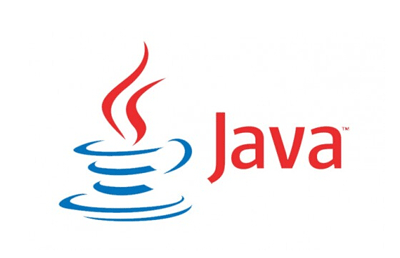Java 从入门到进阶之路(十八)
在之前的文章我们介绍了一下 Java 中的正则表达式,本章我们来看一下 Java 中的 Object。
在日常生活中,任何事物我们都可以看做是一个对象,在编程中是同样的道理,在 Java 编程中其实更突出,因为 Java 就是一门面向对象的编程语言。
我们先来看下面的代码:
1 public class Main { 2 public static void main(String[] args) { 3 Person person = new Person(); 4 // person.age = 1000; // 编译错误 5 // System.out.println(person.age); // 编译错误 6 person.setAge(1000); 7 System.out.println(person.getAge()); // 0 8 9 person.setAge(10); 10 System.out.println(person.getAge()); // 10 11 12 System.out.println(person.toString()); // Person@1b6d3586 13 } 14 } 15 16 class Person { 17 private int age; 18 19 public int getAge() { 20 return age; 21 } 22 23 public void setAge(int age) { 24 if (age < 0 || age > 100) { 25 return; 26 } 27 this.age = age; 28 } 29 } 30 } 31 32 public void setAge(int age) { 33 if (age < 0 || age > 100 ) { 34 return; 35 } 36 this.age = age; 37 } 38 }
在上面的代码中,我们定义了 get 和 set 方法来实现私有属性的获取和更改,起到了对私有属性的保护作用。
在上面的代码中,我们还写了一个 toString() 方法,但是我们并没有在 Person 类中定义该方法,这是因为当我们定义 Person 类的时候,系统会默认继承 Object 类,且 Object 类中有 toString() 方法,并且输出为一个 类名@地址,这个字符串没有什么实际意义。因此通常我们要使用一个类的 toString 方法时,就应当重写该方法,重写该方法后,返回的字符串没有严格的格式要求,将来可以根据需求而定,但是原则上该字符串应当包含当前对象的属性信息,只有当我们自定义的类需要重写该方法时,JAVA API 提供的类通常都已经重写了该方法。
下面我们将 toString() 方法进行重写:
1 public class Main { 2 public static void main(String[] args) { 3 Point point = new Point(1, 2); 4 String string = point.toString(); 5 System.out.println(string); // (1,2) 6 } 7 } 8 9 class Point { 10 private int x; 11 private int y; 12 13 public int getX() { 14 return x; 15 } 16 17 public void setX(int x) { 18 this.x = x; 19 } 20 21 public int getY() { 22 return y; 23 } 24 25 public void setY(int y) { 26 this.y = y; 27 } 28 29 public Point() { 30 } 31 32 public Point(int x, int y) { 33 this.x = x; 34 this.y = y; 35 } 36 37 public String toString() { 38 return "(" + x + "," + y + ')'; 39 } 40 }
在上面的代码中,我们定义了一个 Point 类,相当于二维坐标系上的一个点,我们通过重写 toString 方法实现了一个坐标点的位置。
在 Object 类中还有定义好的 equals 方法,意思是比较两个对象,如下:
public class Main { public static void main(String[] args) { Point point1 = new Point(1, 2); Point point2 = new Point(1, 2); System.out.println(point1 == point2); // false System.out.println(point1.equals(point2)); // false } }
在上面的代码中,point1 == point2 其实比较的是两个类的引用地址,所以为 false,我们看一下 equals 方法的源码:
1 public boolean equals(Object obj) { 2 return (this == obj); 3 }
在上面的代码中,Object 类的 equals 方法其实也是相当于 == 的方法来进行比较,所以当我们使用 equals 方法时同样需要进行重写,他的作用是比较两个对象(当前对象与给定对象)内容是否一样,如下:
1 public class Main { 2 public static void main(String[] args) { 3 Point point1 = new Point(1, 2); 4 Point point2 = new Point(1, 2); 5 System.out.println(point1 == point2); // false 6 System.out.println(point1.equals(point2)); // true 7 } 8 } 9 10 class Point { 11 private int x; 12 private int y; 13 14 public int getX() { 15 return x; 16 } 17 18 public void setX(int x) { 19 this.x = x; 20 } 21 22 public int getY() { 23 return y; 24 } 25 26 public void setY(int y) { 27 this.y = y; 28 } 29 30 public Point() { 31 } 32 33 public Point(int x, int y) { 34 this.x = x; 35 this.y = y; 36 } 37 38 public String toString() { 39 return "(" + x + "," + y + ')'; 40 } 41 42 public boolean equals(Object object) { 43 if (object == null) { 44 return false; 45 } 46 if (object == this) { 47 return true; 48 } 49 if (object instanceof Point) { 50 Point point = (Point) object; // 强转为point类型 51 return this.x == point.x && this.y == point.y; 52 } 53 return false; 54 } 55 }
当我们重写 equals 方法后,就可以获取我们想要的结果了,即上面代码第 6 行结果输出为 true。同样的,只有自己定义的类需要重写,JAVA API 提供的类基本都重写了 equals。


 Java 从入门到进阶之路(十八), Java 中的 Object。
Java 从入门到进阶之路(十八), Java 中的 Object。

 浙公网安备 33010602011771号
浙公网安备 33010602011771号